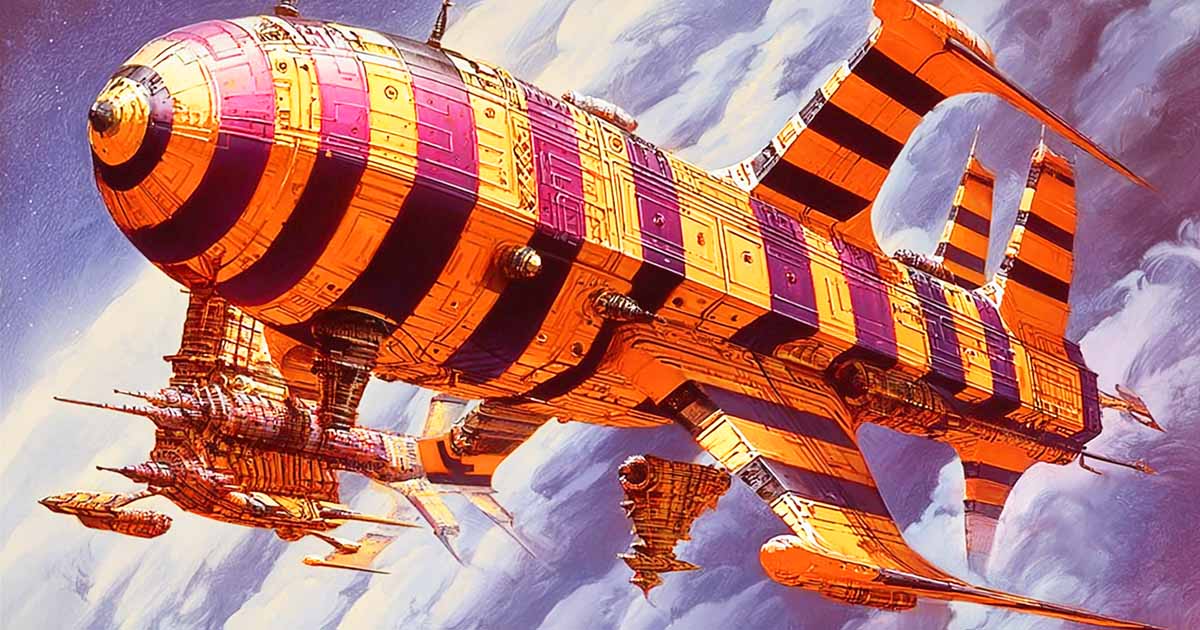Hollywood’s Phantom Zone
Each movie buff is aware of the tales about Hollywood blockbusters that should not have labored however by some means did. Star Wars almost went broke earlier than its first screening. Blade Runner baffled critics and studio execs alike. However the actual treasures of science fiction cinema are those that by no means left the launchpad — the movies trapped perpetually in what could be referred to as Hollywood’s phantom zone.
It’s a unusual place, this growth purgatory. Right here float the goals of administrators who thought larger than budgets, writers who dared to think about the not possible, and producers who believed slightly too laborious that audiences would sit by means of a fourteen-hour metaphysical odyssey about sandworms.
Each few years, a brand new filmmaker wanders into this mist, satisfied he can tame the identical unfilmable beasts that devoured his predecessors. Normally, he cannot. Generally, he comes shut sufficient to alter the course of science fiction anyway.
The reality is, the style has at all times lived on the fringe of sanity and solvency. One of the best concepts are usually probably the most harmful. Alejandro Jodorowsky tried to show Dune right into a psychedelic gospel. Guillermo del Toro thought he might carry H. P. Lovecraft’s chilly cosmos to the multiplex. David Fincher needed to make a film about discovery with no villain, no explosions, and no toys to promote. Every of them failed — spectacularly — however their failures nonetheless resonate by means of the films that had been made.
The unmade science fiction movie is greater than a curiosity. It’s a reflection of what the business fears most: threat, ambiguity, and creativeness that refuse to slot in a two-hour window.
These misplaced initiatives remind us that creativity is not at all times rewarded with a greenlight, and that generally probably the most influential tales are those we solely get to image in our minds.
So buckle in. Forward lies a guided tour by means of Hollywood’s haunted archives—a spot the place Salvador Dalí nonetheless waits for his close-up, Tom Cruise by no means reaches Antarctica, and a sentient laptop named Mike by no means will get his revolution. Welcome to the phantom zone, the place the films that by no means had been may simply be one of the best ones of all.
21 Misplaced Science Fiction Movies That Nonetheless Hang-out Hollywood
| Title | Director / Creator | Years in Growth | Key Element | Standing |
|---|---|---|---|---|
| Dune | Alejandro Jodorowsky | 1974–1976 | 10+ hour non secular epic with Dalí, Welles, and Jagger | Canceled, influenced Alien and Star Wars |
| On the Mountains of Insanity | Guillermo del Toro | 2006–2012 | Lovecraft adaptation, Cruise hooked up, Cameron producing | Shelved after studio rejected R ranking |
| Rendezvous with Rama | David Fincher | 2001–2011 | Clarke adaptation, Freeman producing | Deserted; revived by Denis Villeneuve in 2021 |
| Childhood’s Finish | Stanley Kubrick | Sixties | Clarke novel about transcendence | Deserted; rights held elsewhere |
| Alien 3 | William Gibson (screenwriter) | 1987–1988 | Chilly Conflict-style Alien sequel | Changed by Fincher model; tailored as comedian |
| Alien 5 (Awakening) | Neill Blomkamp | 2015–2017 | Direct sequel to Aliens ignoring later movies | Canceled in favor of Prometheus prequels |
| Rogue Squadron | Patty Jenkins | 2020–Current | Starfighter journey impressed by basic Star Wars lore | Indefinitely shelved by Lucasfilm |
| District 10 | Neill Blomkamp | 2021–Current | Sequel to District 9, centered on corruption and energy | In limbo; by no means entered manufacturing |
| Star Trek | Quentin Tarantino | 2017–2020 | R-rated Thirties gangster-inspired Trek idea | Deserted when Tarantino retired undertaking |
| I, Robotic | Harlan Ellison | 1977–Nineteen Eighties | Asimov adaptation written as a noir thriller | Unproduced; printed as Illustrated Screenplay |
| Neuromancer | Varied (Natali, Cunningham, and so on.) | Nineties–2020s | Gibson’s cyberpunk novel | A number of failed makes an attempt; Apple TV+ sequence in growth |
| Stranger in a Unusual Land | Varied / SyFy | Nineties–2016 | Heinlein’s philosophical novel | Introduced by SyFy; quietly canceled |
| The Moon Is a Harsh Mistress | Tim Minear / Bryan Singer | 2005–2015 | Lunar revolution with sentient AI | Deserted amid manufacturing and authorized points |
| Ringworld | Varied (incl. Alan Taylor) | Nineteen Seventies–2017 | Huge synthetic world by Larry Niven | Amazon pilot canceled; rights inactive |
| Halo | Neill Blomkamp / Peter Jackson | 2005–2006 | Reside-action recreation adaptation | Canceled over monetary dispute; led to District 9 |
| The Diplomat | Howard Hawks / William Faulkner | 1951–1952 | Alien envoy satire set in Washington | By no means produced; solely conceptual notes survive |
| Conflict of the Worlds | Ray Harryhausen | Early Nineteen Fifties | Victorian setting, tentacled Martians | Canceled; Pál’s fashionable model made as a substitute |
| The Elementals | Ray Harryhausen | Nineteen Seventies | Mythic story of warring elemental spirits | Deserted as a consequence of price range issues |
| Calling All Robots | Michael Dougherty | 2008–2011 | Animated mecha journey | Canceled after Mars Wants Mothers failure |
| Meltdown (The Prometheus Disaster) | John Carpenter | Nineteen Eighties | Nuclear-reactor thriller | By no means greenlit; script stays unpublished |
| Ronnie Rocket | David Lynch | 1977–1983 | Surreal electric-noir sci-fi | Unproduced; concepts resurfaced in later works |
Hollywood has by no means been quick on ambition. The distinction between a dreamer and a madman is normally about fifty million {dollars} — and nowhere is that extra evident than within the lengthy, dusty path of unmade science fiction epics.
These had been the initiatives that aimed for the celebrities, terrified accountants, and left idea artists with nothing however heartbreak and storyboards.
Alejandro Jodorowsky’s “Dune” (1974–1976)
Earlier than Star Wars and earlier than Alien, there was Jodorowsky’s Dune — a movie that by no means existed however by some means managed to alter every little thing. The Chilean-French director Alejandro Jodorowsky envisioned it as a “prophet-making machine,” a non secular bomb that might awaken humanity. He wasn’t exaggerating.
He deliberate a 10- to 14-hour film starring Salvador Dalí because the Emperor (for $100,000 an hour), Orson Welles as Baron Harkonnen, and Mick Jagger as Feyd-Rautha. Pink Floyd would deal with the soundtrack. Moebius, H.R. Giger, and Chris Foss had been tasked with designing worlds that made most Nineteen Seventies sci-fi seem like a highschool play.

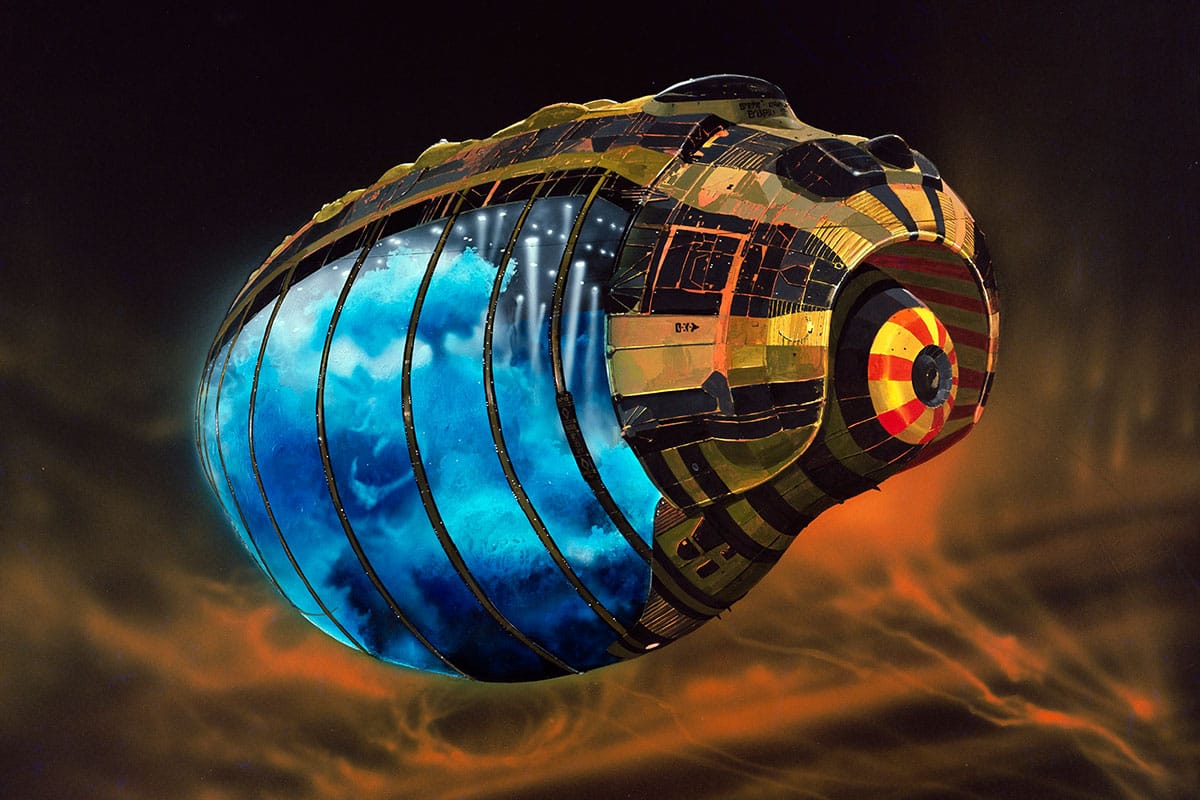
Idea artwork from Jodorowsky’s Dune by way of Sony Classics.
No studio would contact it. The price range ballooned earlier than cameras ever rolled. Jodorowsky refused to chop the runtime or compromise his surreal imaginative and prescient.
By 1976, the undertaking collapsed, however not earlier than its pre-production artwork made the rounds in Hollywood. These storyboards straight impressed Alien and helped form the visible DNA of Star Wars and Blade Runner.
In a way, Jodorowsky’s Dune did get made — it simply took forty years and a dozen different administrators to do it. The documentary, launched many years later, confirmed what followers already suspected: generally, an important film is the one you by no means get to see.
Guillermo del Toro’s “On the Mountains of Insanity” (2006–2012)
Guillermo del Toro is a type of filmmakers who builds worlds, not simply motion pictures.
For years, he carried H. P. Lovecraft’s On the Mountains of Insanity in his again pocket — a doomed Antarctic expedition story drenched in cosmic dread. It was the proper match of artist and writer.
By 2010, Common Photos had signed on. James Cameron was producing. Tom Cruise was able to star. Industrial Gentle & Magic was lined up for results. However the studio flinched. Del Toro needed an R ranking and a $150 million price range. Common needed a PG-13 and a cheerful ending. The script had neither. Then Prometheus got here alongside, masking related territory — scientists exploring the ruins of a creator race — and del Toro’s dream went chilly in a single day.
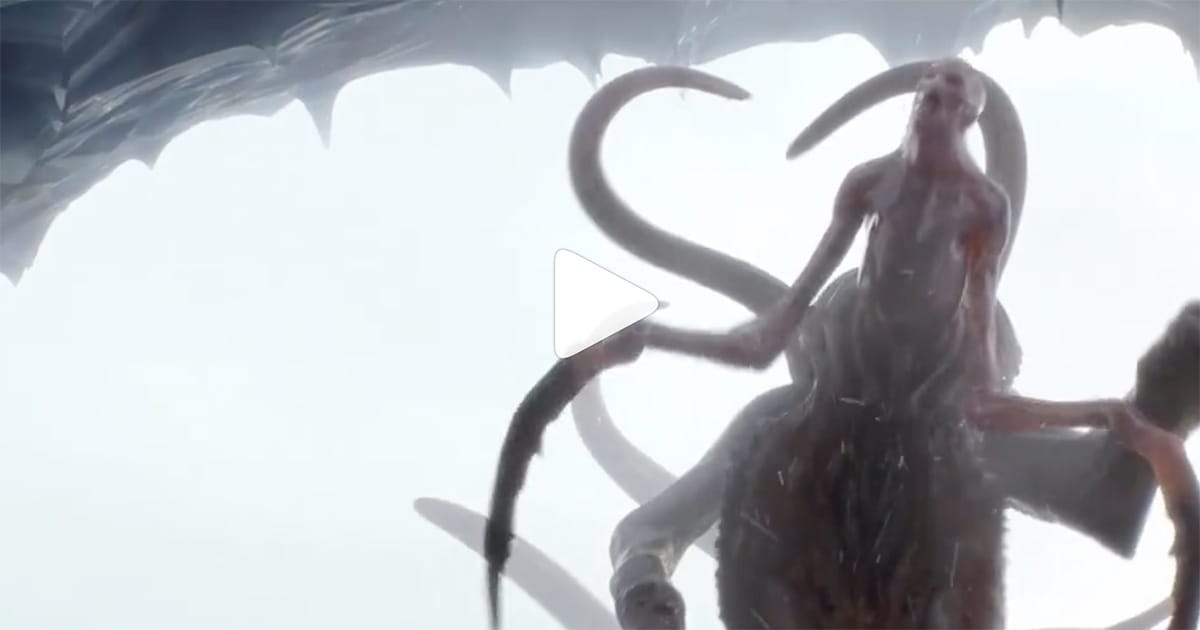
He by no means actually gave up. A number of years in the past, he shared take a look at footage of an early creature sequence, all writhing tendrils and insanity rendered in chilly CGI.
In 2022, he introduced that he may return to the story in stop-motion type — a smaller, weirder model free from blockbuster expectations. Which may truly swimsuit the story higher. Lovecraft by no means wanted an enormous display; he wanted creativeness. Del Toro has loads of that to spare.
David Fincher’s “Rendezvous with Rama” (2001–2011)
Arthur C. Clarke’s Rendezvous with Rama isn’t a straightforward promote. No villain. No chase. No explosion — simply astronauts quietly exploring a colossal alien cylinder that drifts into the photo voltaic system.
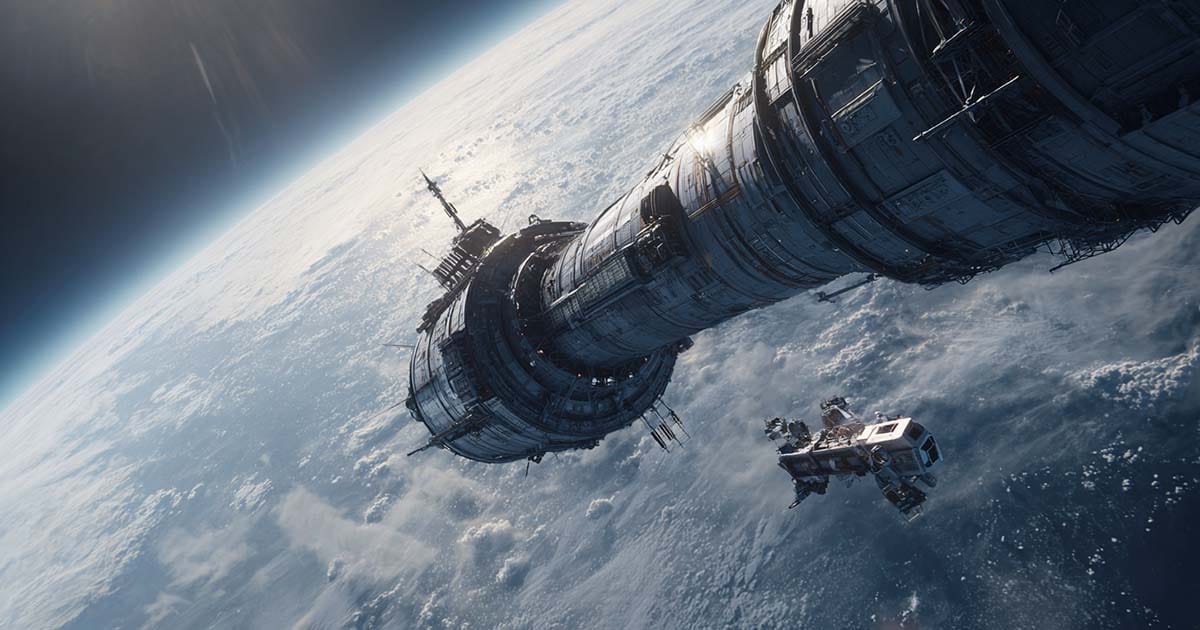
For director David Fincher and producer Morgan Freeman, that was exactly the enchantment.
Fincher spent years making an attempt to make it work. The story’s thriller and cosmic scale had been excellent for his meticulous model, however Hollywood could not work out the best way to market a film about surprise as a substitute of battle. As Fincher put it, it was “a big, costly film that did not have any toys.” By 2008, he admitted defeat, and the undertaking went darkish.
Then, in a twist that Clarke himself may need appreciated, the concept was reborn. In 2021, Denis Villeneuve — contemporary from his triumph with Dune —picked up Rama with Freeman nonetheless producing.
The baton had handed to a brand new technology of dreamers. Whether or not it occurs or not, the try alone proves one thing about science fiction’s cussed optimism. On this enterprise, no thought ever actually dies; it simply goes into hibernation till the suitable thoughts awakens it.
Stanley Kubrick’s “Childhood’s Finish” (Sixties)
Earlier than 2001: A Area Odyssey, Stanley Kubrick had his eye on one other Arthur C. Clarke novel: Childhood’s Finish. It tells the story of a peaceable alien invasion that ends humanity — not by means of destruction, however by means of transcendence.
The aliens, generally known as the Overlords, information mankind towards a last evolutionary leap right into a collective consciousness. It is good, bleak, and slightly too philosophical for a matinee crowd.
Kubrick cherished it however couldn’t safe the rights. As an alternative, he and Clarke developed an unique story that borrowed its cosmic tone and metaphysical questions. That collaboration grew to become 2001. In a wierd manner, Childhood’s Finish was sacrificed in order that one other masterpiece might stay.
Years later, SyFy turned it right into a miniseries, however the magic was gone. Kubrick understood that tales like this weren’t meant to clarify the unknown. They had been meant to make you are feeling small, awed, and barely terrified by the dimensions of existence. That may be a laborious promote in an period obsessive about superheroes, however it’s nonetheless the center of nice science fiction.
Unfilmable
These had been the unfilmable epics — too unusual, too large, or too pure for Hollywood to deal with. But, at the same time as unfinished goals, they’d a profound affect on every little thing that adopted. Their storyboards and half-written scripts grew to become the compost from which fashionable science fiction grew. The films had been by no means made, however their shadows are in every single place.
Each main science fiction franchise finally turns into haunted by its personal success.
As soon as a narrative captures the creativeness, each studio govt inside 100 miles begins on the lookout for methods to stretch it additional, like a rubber band that refuses to snap.
Sequels, prequels, spin-offs — generally they make it to the display, generally they vanish right into a growth void. What stays are the ghosts of flicks that nearly had been, phantom blueprints for universes that might have been larger, stranger, or perhaps simply higher.
Quentin Tarantino’s “Star Trek” (2017–2020)
For a short, gleaming second, Star Trek followers imagined a model of the Federation that spoke in Tarantino dialogue and bled like considered one of his gangsters. In 2017, the director pitched Paramount a boldly unorthodox thought: a hard-R Star Trek movie impressed by a 1968 episode, “A Piece of the Motion,” during which the Enterprise crew encounters a planet that has modeled its society after Nineteen Twenties gangsters. Tarantino referred to as it “Pulp Fiction in area,” and J. J. Abrams signed on to provide.

The undertaking moved additional than most curiosities. Tarantino met with writers, together with The Revenant’s Mark L. Smith, and Paramount handled it as an energetic growth monitor alongside its mainline franchise. Then got here the director’s vow to retire after ten movies and the studio’s shift towards safer PG-13 initiatives. By 2020, Tarantino had stepped away, forsaking a script that few insiders have learn and everybody appears keen to explain.
What may it have regarded like? Most likely not what the purists feared. Tarantino as soon as stated he cherished the “philosophical optimism” of basic Trek and needed to push it by means of the lens of grownup storytelling quite than irony. Nonetheless, the picture of Kirk buying and selling quotes with gangsters below neon starlight was an excessive amount of for Paramount’s nerves. The undertaking now floats among the many studio’s deepest ghosts — a reminder that even probably the most mainstream franchises generally entice the wildest dreamers.
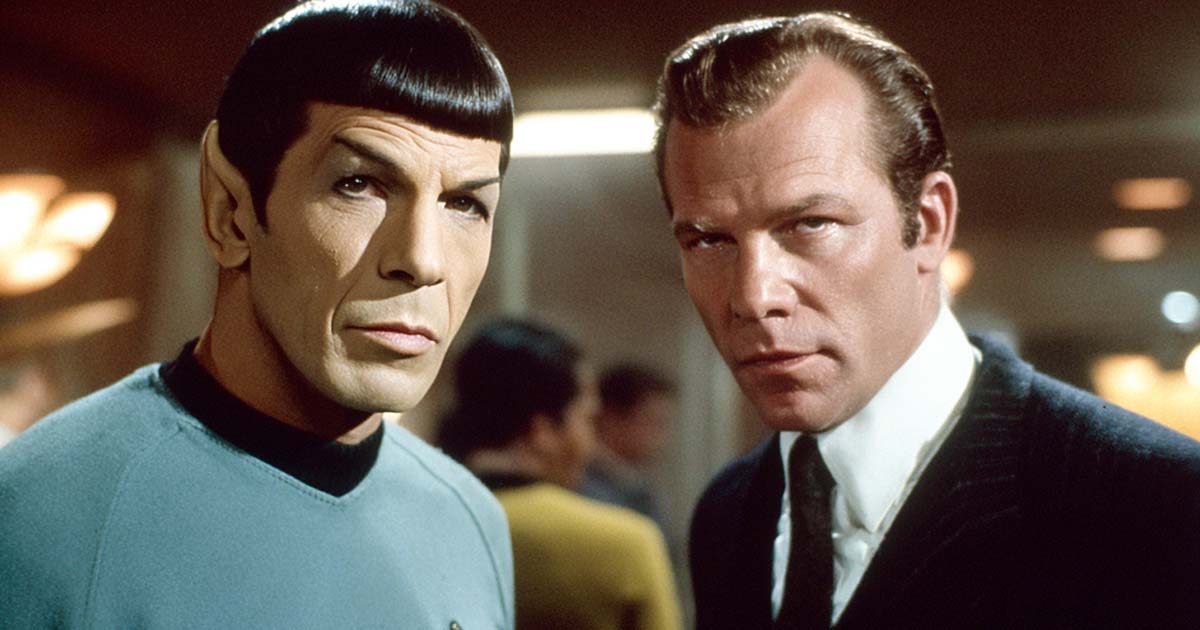
William Gibson’s “Alien 3” (1987–1988)
When twentieth Century Fox referred to as cyberpunk legend William Gibson to put in writing Alien 3, the concept was to take the sequence again to its Chilly Conflict paranoia roots.
Gibson’s script imagined a divided human future, the place the “Union of Progressive Peoples” and a company navy complicated fought over bio-weaponized xenomorph DNA. Ripley was in a coma for many of it. Hicks and Bishop led the motion. It was The Factor meets The Manchurian Candidate — a sequel extra about politics and worry than bounce scares.
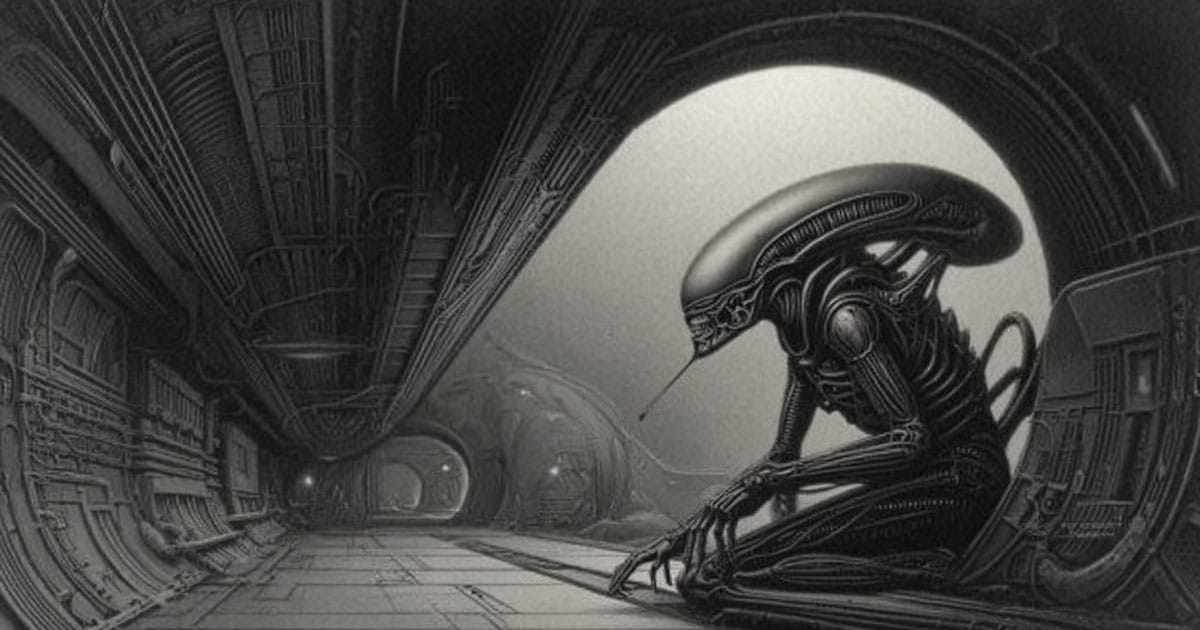
Fox executives had been uncertain the best way to reply. They needed monsters, not metaphors. The draft was shelved, rewritten half a dozen occasions, and finally changed by David Fincher’s moody prison-planet model in 1992.
Gibson’s story gathered mud for many years till it was lastly tailored as a comic book and an audio drama. Listening to it now, you may virtually really feel the film respiration below the floor — a chilly, metallic dream from an alternate Nineteen Eighties the place science fiction saved its edge and its brains intact.
Neill Blomkamp’s “Alien 5” (2015–2017)
Quick-forward three many years, and one other dreamer got here knocking. After District 9, Neill Blomkamp was the darling of significant sci-fi — a director who might combine {hardware} and heartbreak.
His pitch for Alien 5 was easy: faux Alien 3 and Resurrection by no means occurred. Deliver again Ripley, Hicks, and Newt. Give followers the ending they by no means obtained.
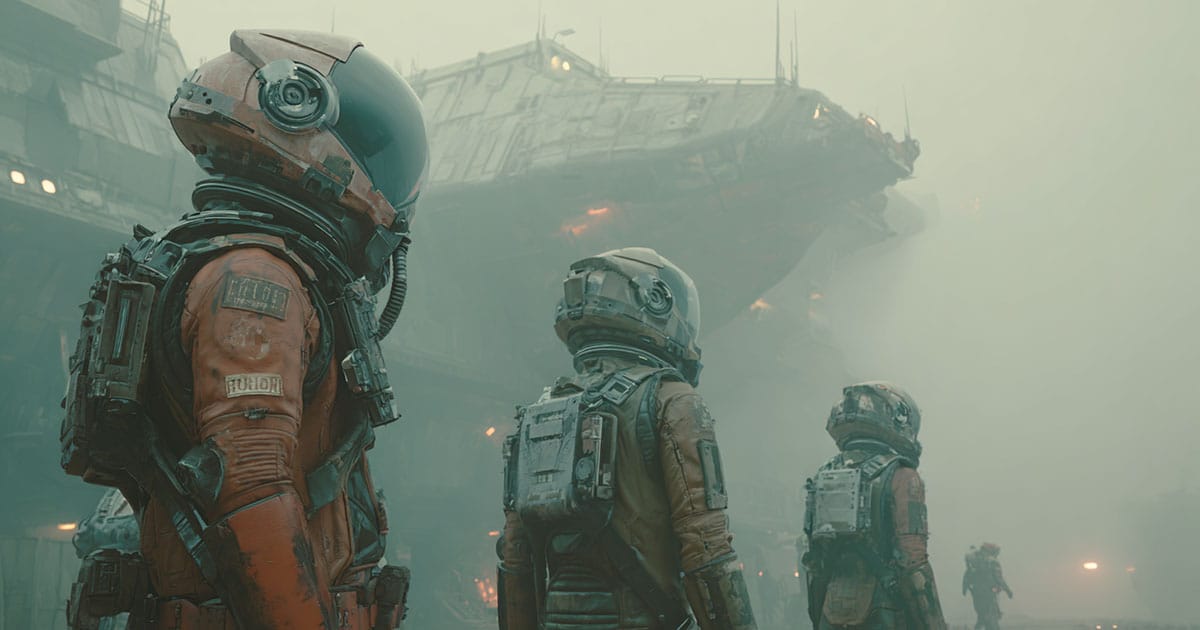
He launched idea artwork on-line — aged Ripley in a stress swimsuit, Hicks scarred however alive, the derelict ship half-buried in acid fog — and the web went wild.
For a second, it regarded just like the xenomorphs would lastly come dwelling. Then Ridley Scott stepped in. The studio selected his Prometheus prequels as a substitute. Blomkamp’s movie was quietly killed earlier than a body was shot.
It’s considered one of fashionable cinema’s crueler what-ifs. On occasion, the director teases the designs on social media, and the fan base groans in unison. The lesson? Even the fiercest creatures in film historical past can not survive a scheduling battle.
Patty Jenkins’ “Rogue Squadron” (2020–Current)
When Disney introduced Rogue Squadron, it appeared like the proper marriage of nostalgia and new power. Patty Jenkins — contemporary off Marvel Lady — promised a “high-speed, high-heart” story impressed by her father, an Air Power pilot. It was purported to carry Star Wars again to its roots: X-wings, camaraderie, heroism. For longtime followers, it was a breath of oxygen after years of Jedi household drama.
Then the turbulence started. Script rewrites, inner shake-ups, and the gravitational pull of a dozen different Lucasfilm initiatives despatched the fighter squadron spinning off radar.
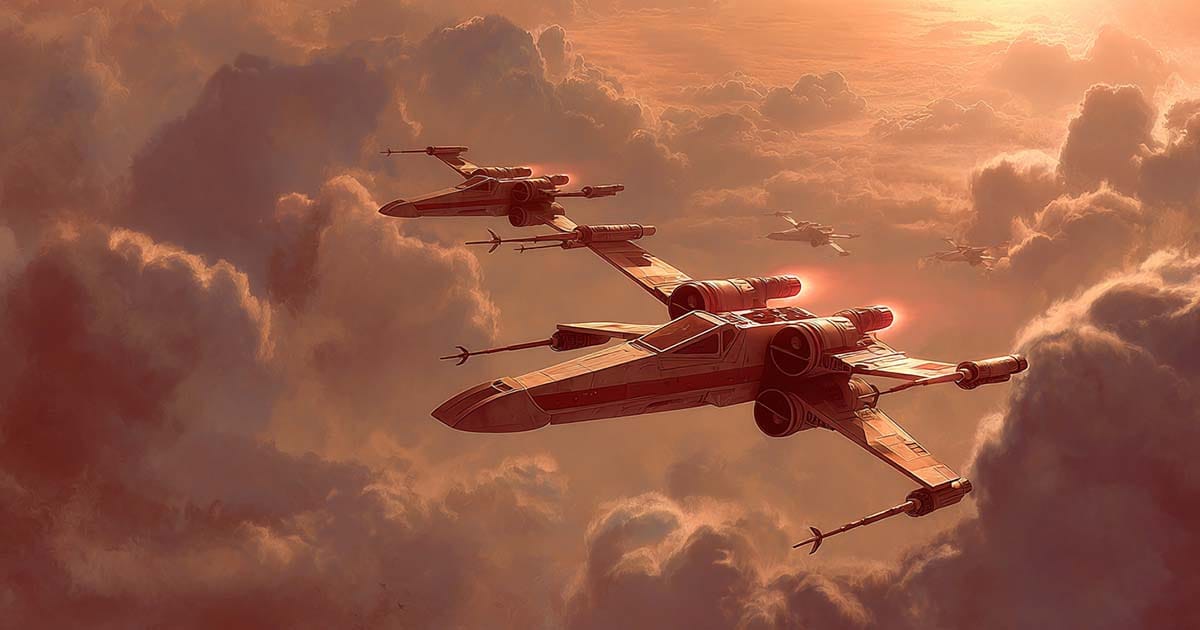
The discharge date slipped from 2023 to “TBD,” and Jenkins moved on to different work. For now, Rogue Squadron is parked within the hangar — a reminder that even the galaxy’s most worthwhile franchise can stall when it forgets to test its personal coordinates.
Neill Blomkamp’s “District 10” (2021–Current)
Of all of the ghosts on this gallery, District 10 stands out as the most self-inflicted. Blomkamp created some of the unique science fiction movies of the twenty-first century with District 9, then spent years circling its potential sequel. He promised it could confront authorities corruption and race in a brand new manner, maybe shifting the story from Johannesburg to america. Each time he mentions it, hope sparkles.
And each time, he modifies his thoughts. Blomkamp admits he doesn’t wish to repeat himself, and that’s in all probability smart. Nonetheless, there’s something poignant a few filmmaker haunted by his personal masterpiece — like a scientist afraid to open the lab door once more as a result of the final experiment labored too properly.
Ghosts
The franchise ghost is a uniquely fashionable phenomenon. These movies weren’t crushed by not possible budgets or inventive hubris. They had been smothered by success, trapped within the gravity of expectations constructed over many years. But their absence leaves a type of resonance, a hum beneath the tradition. Followers maintain their recollections alive with idea artwork, comics, and podcasts.
The studios might name it growth hell, however for the remainder of us, it’s one thing nearer to purgatory—a ready room between creativeness and commerce the place the machines by no means sleep, and the ghosts of what may need been maintain whispering by means of the circuits.
Science fiction writers dream larger than the films ever can. Their phrases conjure galaxies, philosophies, and futures that do not match neatly into two hours and three acts.
Hollywood has tried to bridge that hole for many years. Generally it succeeds. More often than not, the bridge collapses below the burden of creativeness. The next tales illustrate what occurs when nice books encounter unyielding publishers.
Harlan Ellison’s “I, Robotic”
Harlan Ellison’s collaboration with Isaac Asimov ought to have been the last word assembly of minds.

Asimov offered the cool rationalism — the Three Legal guidelines of Robotics. Ellison introduced the fervour, paranoia, and punch of a screenwriter who might make a machine sound human and a human sound like a machine. His 1977 screenplay turned Asimov’s anthology right into a single story a few psychologist investigating a robot-driven thriller. It was sharp, grownup, and forward of its time.
The issue was Hollywood. The studios needed one thing lighter, perhaps with extra laser fights and fewer existential questions. Ellison did not compromise, and the undertaking died on the vine. He printed the script as I, Robotic: The Illustrated Screenplay, full with manufacturing notes and storyboards.
Studying it now, you may really feel the film which may have been — Blade Runner earlier than Blade Runner, a mixture of ethics, worry, and melancholy that might have match completely within the anxious late seventies.
Ellison’s model by no means made it to the display, but it surely grew to become a ghost blueprint. When Alex Proyas lastly made I, Robotic in 2004, he used Asimov’s title and little else. The smooth summer season blockbuster was the antithesis of Ellison’s grim warning. His unmade model stays the extra trustworthy adaptation — the one which understood robots as a mirror, not a menace.
William Gibson’s “Neuromancer”
Few books have predicted their very own failure to be filmed as precisely as Neuromancer.
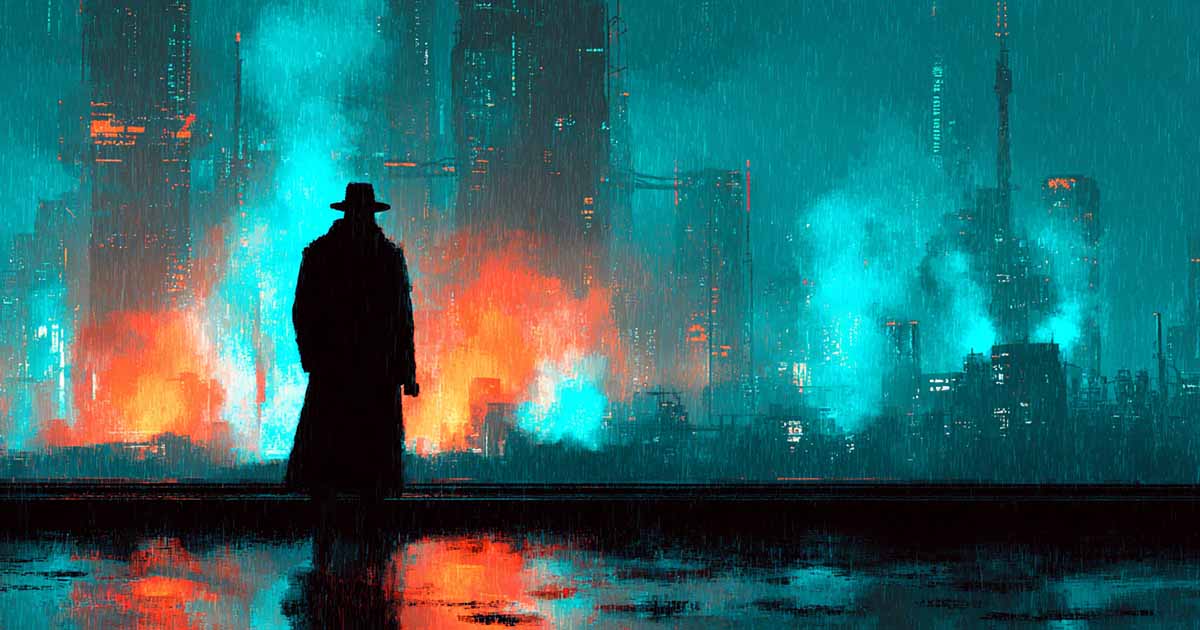
William Gibson’s 1984 novel coined the time period “our on-line world” and foresaw a wired world years earlier than the online existed. However Gibson’s writing — dense, poetic, disorienting — was not constructed for screenplays. Administrators from Vincenzo Natali to Chris Cunningham tried to translate his chilly imaginative and prescient of a future dominated by hackers, information thieves, and synthetic consciousness. Every bumped into the identical downside: how do you movie a hallucination with out shedding the thriller?
By the 2000s, the undertaking had developed a popularity as cursed. The visible model had already been absorbed by motion pictures like The Matrix and Ghost within the Shell, making Gibson’s unique imaginative and prescient appear redundant to the very movies it impressed.
Nonetheless, the property refuses to die. Apple TV+ is now growing a sequence model, which could lastly have the scope to seize Gibson’s layered world—a realm the place the sky is “the colour of tv tuned to a useless channel” and the heroes are damaged, good outlaws.
A Neuromancer adaptation might by no means really feel new once more, however that is the irony. Gibson wrote a few world the place every little thing is recycled, copied, and commodified. Each failed try proves he was proper.
Robert Heinlein’s “Stranger in a Unusual Land”
Within the sixties, Stranger in a Unusual Land was revolutionary — half gospel, half satire, half counterculture manifesto.
Heinlein’s story of Valentine Michael Smith, the human raised by Martians who returns to Earth preaching free love and psychic unity, was a best-seller and a scandal. It gave the English language the phrase “grok,” that means deep understanding, and impressed communes, sermons, and late-night dorm debates.
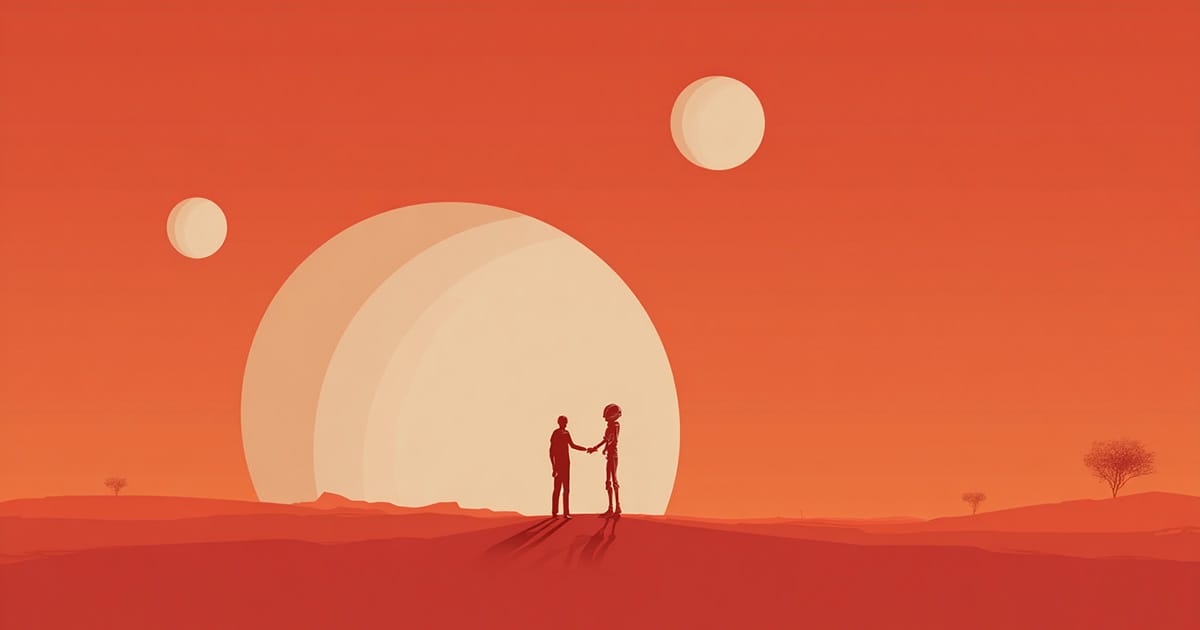
A movie model, although, has at all times been a minefield. The e-book’s theology of self-deification and its open discuss intercourse and society make studio executives sweat. Actor Tom Hanks as soon as held the rights within the Nineties, hoping to provide a trustworthy adaptation, however even his clout couldn’t navigate the minefield. In 2016, Syfy introduced a sequence with Paramount Tv, solely to let it fade with out clarification.
The true impediment isn’t content material — it is tone. Heinlein wrote concepts, not scenes. The e-book shifts from science fiction to sermon, from Martian philosophy to Earthly chaos. Translating that’s like making an attempt to movie a dream that lectures you midway by means of. The story survives greatest the place it began — within the creativeness.
“The Moon Is a Harsh Mistress”
If Stranger in a Unusual Land was Heinlein’s sermon, The Moon Is a Harsh Mistress was his manifesto.
Written in 1966, it’s a political thriller disguised as laborious sci-fi — a lunar penal colony combating for independence with the assistance of a sentient laptop named Mike. It’s the American Revolution performed out on the moon, with libertarian beliefs and chilly logic as weapons.

It ought to have been cinematic, rebel, humor, and a built-in particular impact — low gravity. But each try and movie it has sputtered. Firefly author Tim Minear wrote a trustworthy script in 2005 that went nowhere. A decade later, twentieth Century Fox tried once more below the title Rebellion, with Bryan Singer hooked up to direct. That model died after the director’s private scandals made him untouchable in Hollywood.
Heinlein’s narrative is a machine of logic and debate, not emotion. What works on the web page — discussions of revolution, self-governance, and the rights of man — performs like a civics lecture on display. Nonetheless, it stays one of many few unmade movies that feels inevitable. Eventually, some filmmaker will get bored with superheroes and rediscover Heinlein’s lunar patriots.
Larry Niven’s “Ringworld”
Larry Niven’s Ringworld is likely one of the grandest concepts ever printed. A person-made ring circling a star, so huge it might maintain three million Earths.
It’s science fiction as structure. The problem for filmmakers has at all times been matching that scale. The e-book is primarily an exploration — a handful of people and aliens wandering by means of not possible landscapes as they attempt to perceive who constructed them. There is no villain, no romance to talk of, and no clear ending, simply awe.
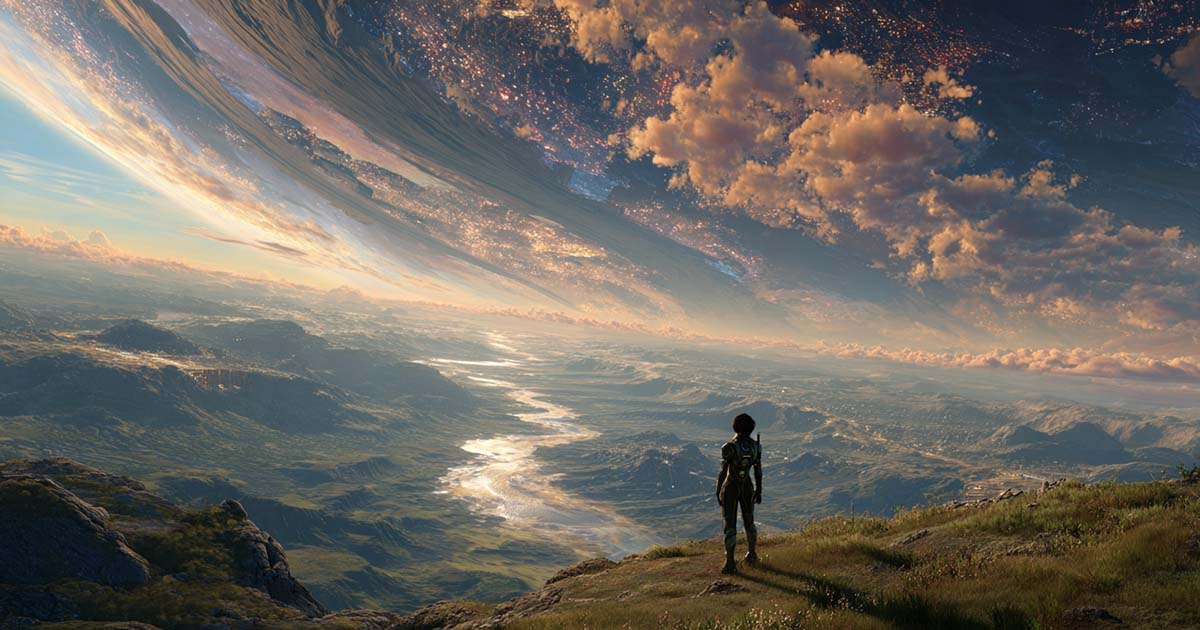
Hollywood loves awe till it will get the invoice. A function model has been “in growth” for the reason that Nineteen Seventies. A Syfy miniseries got here shut in 2004, then once more in 2013. Amazon picked it up in 2017, with Sport of Thrones director Alan Taylor hooked up to the pilot, however the undertaking stalled as a consequence of rights and price range points.
To make issues worse, online game followers now affiliate the large orbital ring with Halo, despite the fact that Niven invented the concept first. That makes any movie model look by-product accidentally. For now, Ringworld stays the most important film by no means made — a reminder that creativeness has no scale restrict, however budgets do.
Books Not on Movie
From Asimov’s cause to Gibson’s rebel, Heinlein’s theology to Niven’s geometry, these unmade variations chart the bounds of what studios can deal with. They reveal a reality older than Hollywood itself: it’s simpler to construct a rocket than to bottle an enormous thought.
These initiatives inform the identical story in several costumes. Massive concepts draw readers in and scare studios off. Dialogue that sings in print goes flat at 24 frames per second. Nonetheless, the affect leaks out. Ellison’s bruising seriousness about robots. Gibson’s model grafted onto a dozen neon futures. Heinlein’s questions on liberty and religion by no means cease poking the tradition. Even stalled, these variations form what will get made subsequent.
If the unfilmable epic is about scale, this chapter is about philosophy. Translate a imaginative and prescient, and also you may lose it. Refuse to translate, and also you threat shedding the viewers. That rigidity is the phantom display — brilliant, tempting, and simply out of attain.
Not each phantom undertaking started with a best-selling novel or a billion-dollar franchise. Some began with a clean web page and an excessive amount of creativeness.
These are the forgotten originals — the movies born from daring ideas, new media, or just administrators who reached past what studios might perceive.
They’re the different misplaced worlds, every undone by the identical combination of ambition and dangerous timing.

Neill Blomkamp’s “Halo” (2005–2006)
Few failed productions modified science fiction extra profoundly than Halo.
In 2005, Microsoft needed to show its record-breaking online game right into a cinematic juggernaut. They employed Peter Jackson to provide and a younger Neill Blomkamp — then identified for commercials and quick movies — to direct. The plan promised a gritty, live-action imaginative and prescient of interstellar warfare.
The deal blew up earlier than cameras rolled. Microsoft demanded $10 million upfront, 15 % of field workplace receipts, and last artistic management, whereas refusing to contribute to the manufacturing price range. Fox and Common, who had agreed to co-finance, walked away in 2006. The dream of Spartans and Covenant armies collapsed in a single day.

But, from that wreckage got here one thing extraordinary. Blomkamp used the identical artwork division, props, and inventive crew to provide District 9. What had begun as a company property became some of the unique science fiction movies of the century — political, private, and completely distinct.
Halo’s failure was not an ending; it was a change. Generally, when the machine breaks, artwork slips by means of the gears.
Howard Hawks and William Faulkner’s “The Diplomat” (1951–1952)
Within the early fifties, two American giants — director Howard Hawks and author William Faulkner — briefly joined forces to create a science fiction satire titled The Diplomat. The premise reportedly adopted an alien envoy visiting Washington, D.C., solely to seek out humanity extra absurd than any extraterrestrial species. Suppose The Day the Earth Stood Nonetheless rewritten by a Southern novelist with a whiskey glass in hand.
Hawks and Faulkner had been an unlikely however confirmed duo. They’d already collaborated on To Have and Have Not and The Massive Sleep, the place Faulkner’s sharp dialogue matched Hawks’s assured visible storytelling. However The Diplomat by no means made it previous the concept stage. No studio was desirous to bankroll a cerebral comedy about first contact through the Chilly Conflict. The script, if it ever existed, vanished into the pile of unproduced Faulkner screenplays.
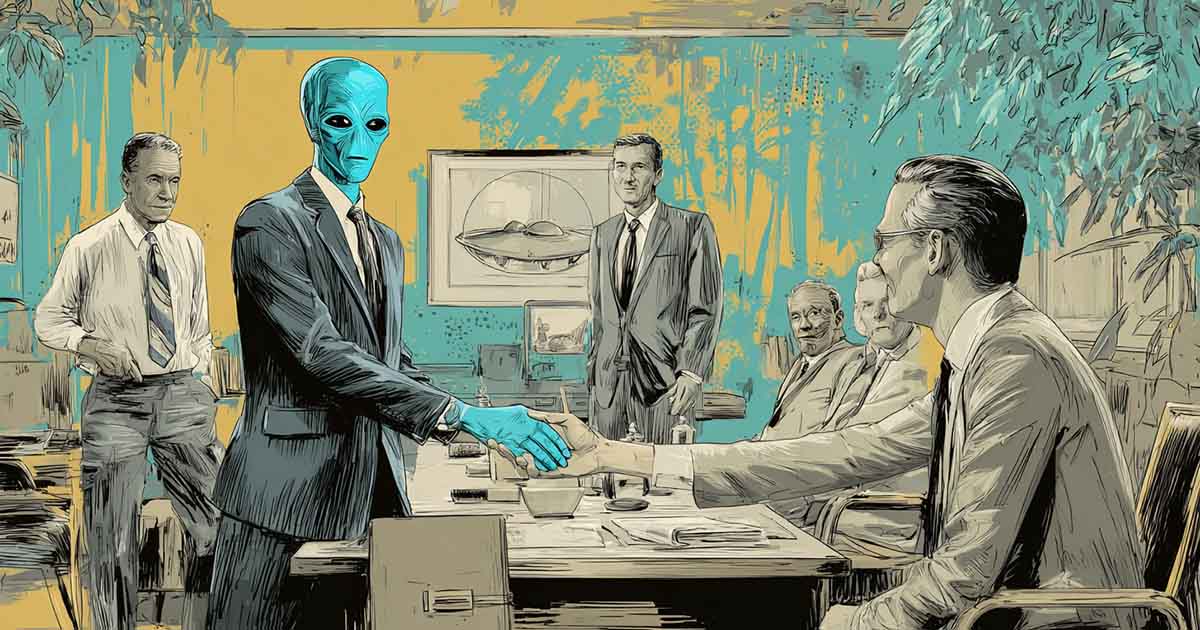
The irony is that each males had been proper for the job. Hawks understood banter and rigidity. Faulkner understood pleasure and delusion. Collectively, they could have made a movie that dissected humanity’s political self-importance lengthy earlier than Dr. Strangelove. As an alternative, The Diplomat stays a ghost of a film that might have made America giggle at itself through the decade it least needed to.
The Misplaced Worlds of Ray Harryhausen (Nineteen Fifties–Nineteen Seventies)
Ray Harryhausen made monsters transfer lengthy earlier than digital results existed. He introduced skeletons to life in Jason and the Argonauts and big octopi to the Golden Gate Bridge in It Got here from Beneath the Sea. However even he couldn’t animate a inexperienced mild from the studios.
Lots of his dream initiatives had been too bold, too handmade, or too expensive for his or her time.
His most well-known unrealized movie was Conflict of the Worlds. Within the early Nineteen Fifties, Harryhausen pitched a trustworthy adaptation of H. G. Wells’s novel, set in Victorian London and that includes the Martians as tentacled horrors quite than smooth saucers. He constructed fashions and take a look at footage, however traders selected George Pál’s modernized model as a substitute. Later, Harryhausen developed The Elementals, a mythic story of warring spirits battling throughout historical ruins, solely to see it die in pre-production.
In the long run, Harryhausen’s unmade movies grew to become a part of his delusion. They remind us that the craftsman’s creativeness exceeded his period’s know-how. Each stop-motion creature he did full carries a hint of those he by no means might.
Disney’s “Calling All Robots” (2008–2011)
Within the late 2000s, Walt Disney Photos teamed with Robert Zemeckis’s ImageMovers Digital to create a motion-capture animated function referred to as Calling All Robots. Directed by Michael Dougherty (Trick’ r Deal with), it instructed the story of a boy who joins Earth’s mech protection program to struggle big monsters — solely to uncover that the battle is staged for revenue by a corrupt basic. It was pulp journey with an ethical edge.
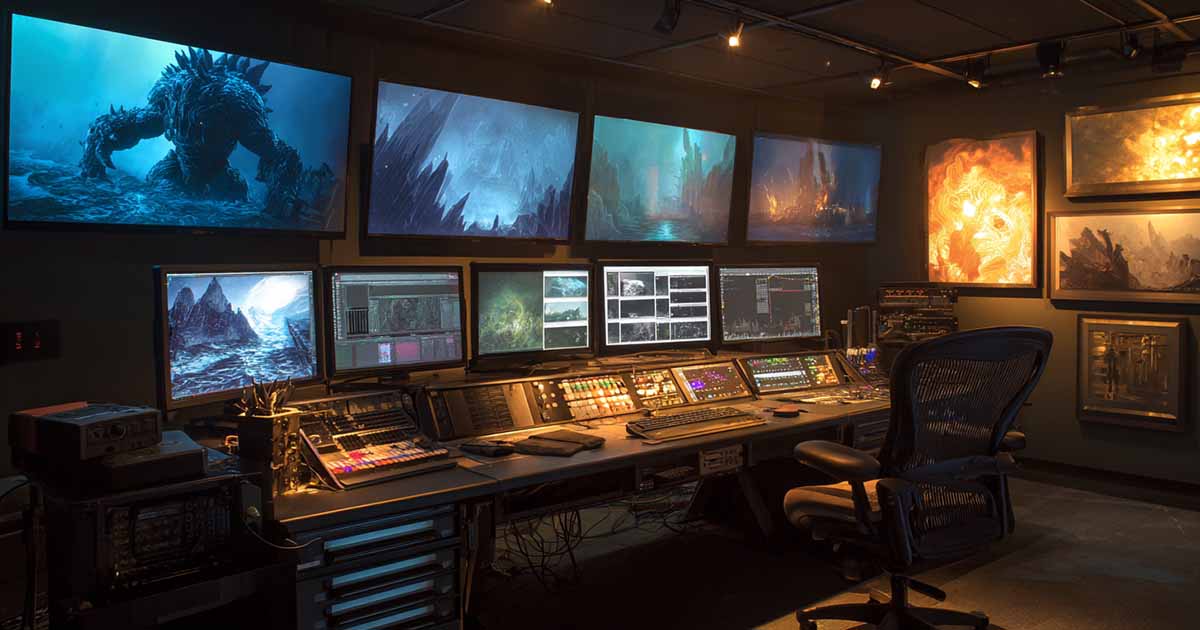
Manufacturing was properly underway when Mars Wants Mothers (2011) flopped so catastrophically that Disney shut down all the studio. The collateral harm took Calling All Robots with it. The cancellation was last, however its DNA lived on: two years later, Pacific Rim hit theaters with strikingly related imagery and themes.
The movie’s idea artwork — smooth robots, glowing cities, Chilly Conflict colour palettes — circulated on-line for years. Like many misplaced initiatives, it did not disappear; it merely mutated. Its affect reemerged by means of different creators, proving that even unbuilt worlds go away shadows on the wall.
John Carpenter’s “Meltdown (The Prometheus Disaster)” (Nineteen Eighties)
After The Factor and Escape from New York, John Carpenter needed to make a nuclear thriller. Meltdown (The Prometheus Disaster) follows a scientist trapped in a reactor complicated as a series response threatens to devour the planet. The script blended the claustrophobic rigidity of Alien with the ethical panic of Dr. Strangelove.
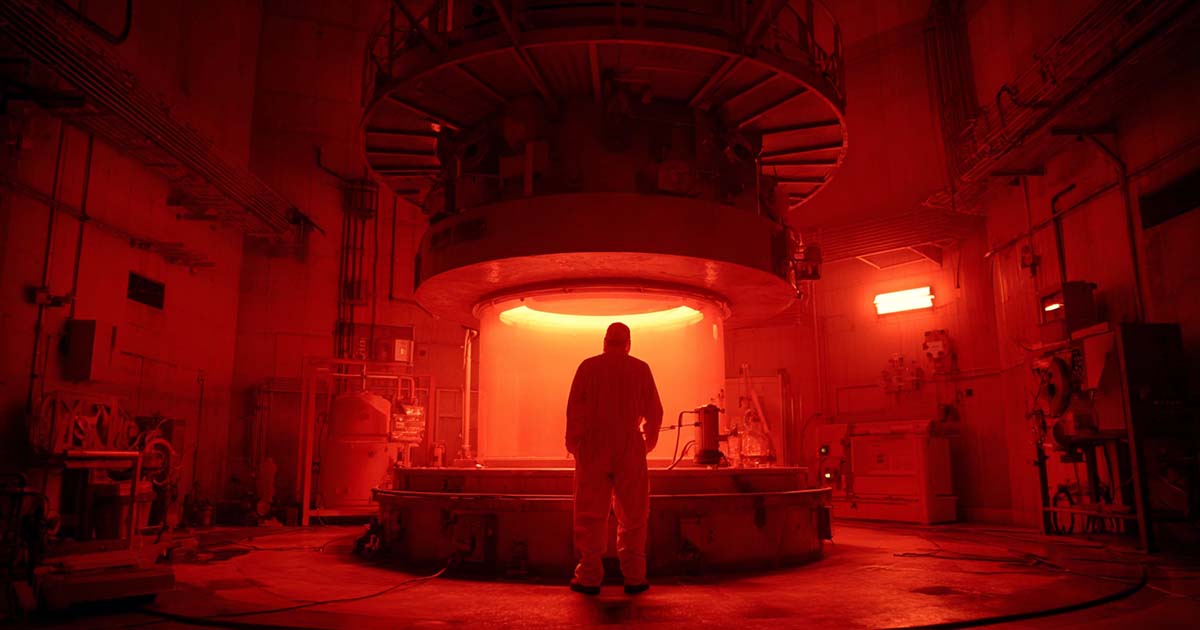
The undertaking languished by means of growth within the Nineteen Eighties, however no studio was prepared to the touch nuclear catastrophe materials. By then, audiences had already absorbed The China Syndrome and real-world scares like Chernobyl.
Carpenter’s imaginative and prescient — a mixture of horror, heroism, and atomic nervousness — was shelved. The script circulates quietly on-line, a relic from a time when filmmakers nonetheless thought nuclear battle could possibly be stopped by one good man and a wrench.
David Lynch’s “Ronnie Rocket” (1977–1983)
Earlier than making Blue Velvet or Twin Peaks, David Lynch tried to create a surrealist sci-fi thriller movie referred to as Ronnie Rocket.
It adopted an electrically charged dwarf who goals of turning into a rock star whereas a detective explores a dimension dominated by industrial noise. It was unusual even for Lynch — half noir, half nightmare, half rock opera.
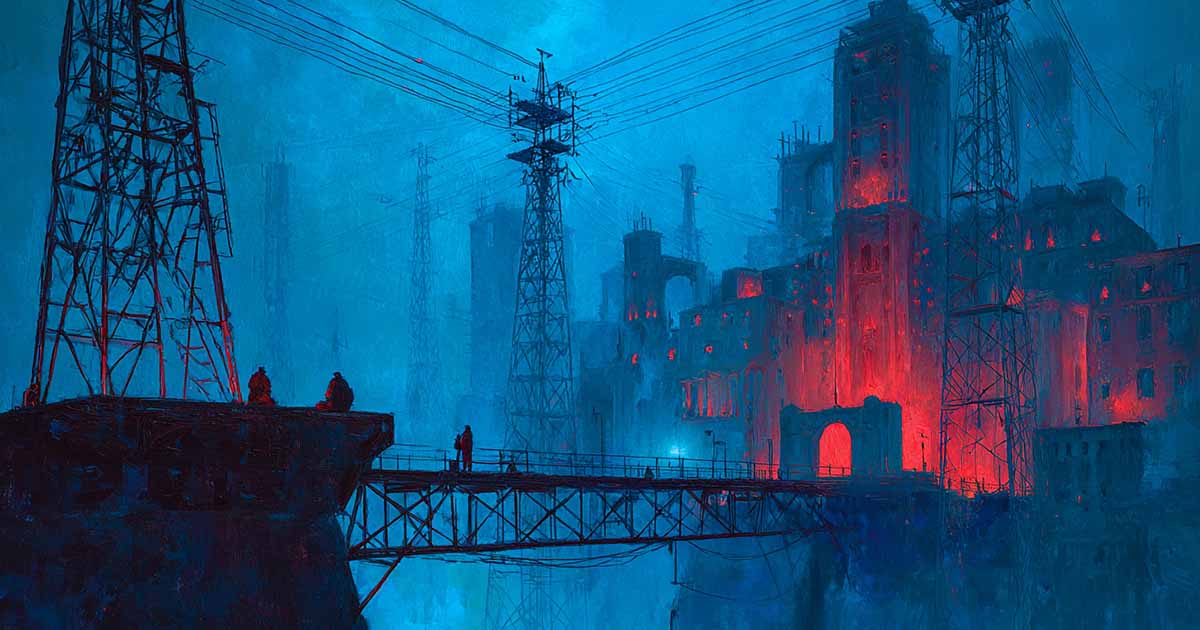
For six years, he shopped the script round city. Each studio handed. Some stated it was too bizarre; others merely didn’t perceive it. Lynch moved on to The Elephant Man, Dune, and finally Eraserhead’s non secular successors on tv. But he nonetheless calls Ronnie Rocket his misplaced love.
The movie’s imagery — a metropolis powered by electrical energy and insanity — would resurface all through his later work. Like the opposite misplaced worlds of this part, Ronnie Rocket might by no means have existed, but it surely continues to hang-out every little thing that adopted.
The Misplaced
These initiatives type the style’s outer rim — the experiments, oddities, and near-misses that stretch past adaptation or franchise logic. They remind us that science fiction is not constructed solely from success tales. It’s constructed from the wreckage of creativeness itself, the blueprint strains of movies that by no means fairly solidified into actuality.
Hollywood might name them failures. Followers name them goals. Someplace in between lies the reality. Unmade science fiction movies will not be useless, they’re dormant. They exist in sketches, in anecdotes, and within the quiet affect they go away behind. For each film that was canceled, there’s one other that borrowed its bones and ran with them.
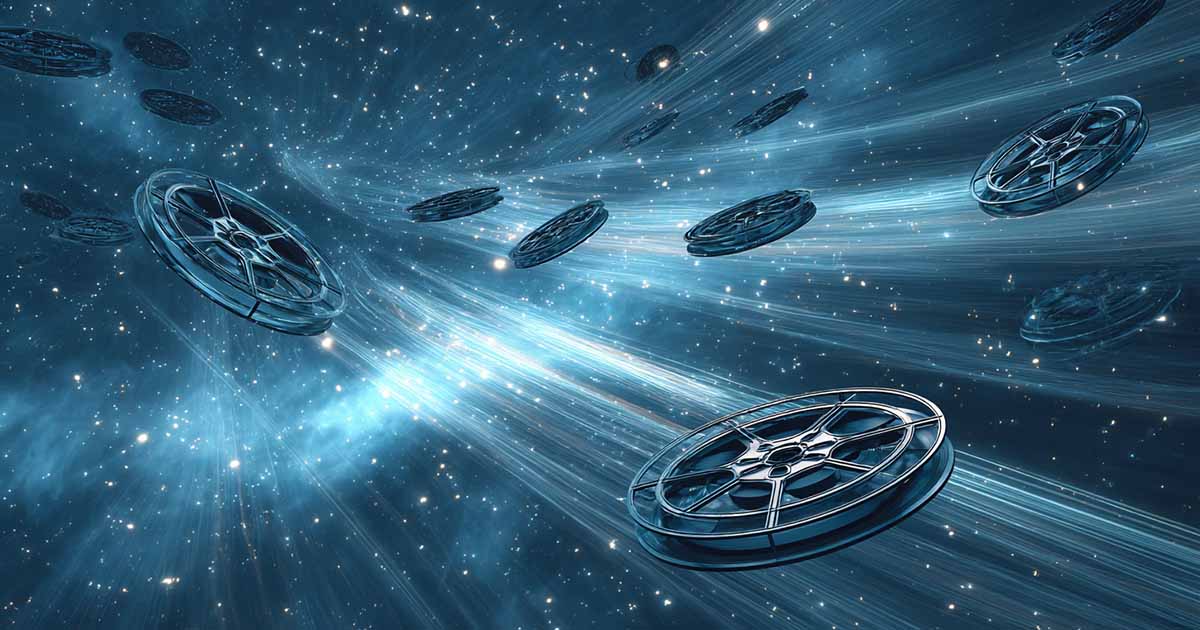
Jodorowsky’s misplaced Dune formed the visible DNA of Alien and Blade Runner. The collapse of Microsoft’s Halo undertaking birthed District 9. Disney’s Calling All Robots whispered its concepts into Pacific Rim. Even Faulkner’s forgotten satire and Harryhausen’s unrealized monsters left their shadows on the artwork that adopted.
In that sense, Hollywood’s trash heap can also be its seedbed — creativity doesn’t vanish when the cash runs out; it mutates, finds new hosts, and survives.
There’s one thing virtually comforting about that. These phantom movies are pure creativeness, untouched by dangerous edits, take a look at screenings, or field workplace failure. They exist in excellent type, suspended between thought and motion. And perhaps that’s the place science fiction belongs — midway between actuality and the dream of what could possibly be.
The unmade movie, like a message from a future we by no means reached, reminds us that progress isn’t linear. It is messy, filled with false begins and forgotten brilliance. However these ghosts nonetheless work for us. They problem each new technology of creators to purpose greater, suppose extra creatively, and take extra dangers. In spite of everything, each world begins as an thought, and a few concepts are too large to remain on the web page.

